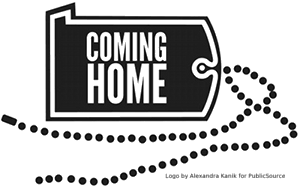
More than 25 million people in the U.S. are living with Type 2 Diabetes. That’s about 8.3% of the population, but there is one group experiencing higher rates.
“If you look at blacks over the age of 20, non-Hispanic blacks, almost 19% have diabetes,” said Mim Seidel, a registered dietician with the Food Studies Program at Chatham University.
As part of its summer institute, the University of Pittsburgh’s Center on Race and Social Problems examined the issue, possible causes, and what programs are offered to prevent Diabetes and better manage it in Allegheny County. Type 2 diabetes causes a lot of illnesses and is the 7th leading cause of death in the nation. Looking at why there is a racial disparity is the “million dollar question,” but there is no one answer.
“There’s probably a lot of different reasons. We do believe there’s some genetic differences between blacks and whites, but there also may be differences in care, and also the fact that blacks are over-represented in underserved populations and in poor populations, that probably also plays a part,” said Seidel.
It can be hard for people of limited means to manage their diabetes. Seidel said it’s often not too difficult for people who have health insurance, but resources are limited for those without coverage. In Allegheny County, it’s estimated that the mortality rate for blacks with diabetes is twice that of whites with the disease.
The good news, according to Seidel, is Type 2 diabetes is preventable, but in order to prevent it, people need to keep weight off or lose weight, which means they need to eat right and exercise, but there are obstacles to that.
“What if you live in a poor neighborhood and you don’t have access to a full-service super market? What if you say, ‘Sure, I’d be active, I’ll go out and take a walk, but I can’t. Once it’s dark, it’s unsafe, or I have no sidewalks, so even in the daytime I risk being hit by a car. I have no safe place to send my children out to play.’? Cost of food,” she said.
Seidel said local, state, and federal policy makers need to make changes to make living a more healthy life easier, including subsidizing fruit and vegetables the way corn and soy are subsidized. Seidel thinks the grain subsidies results in what she called junk food being cheaper than healthy food.
The goal of this seminar and others is to tackle racial disparities in health care and other areas, and to discuss why current approaches to ending that disparity are not sufficient. The summer seminar series also brings together health and social work professionals to discuss how they can better collaborate to address the disparities.






